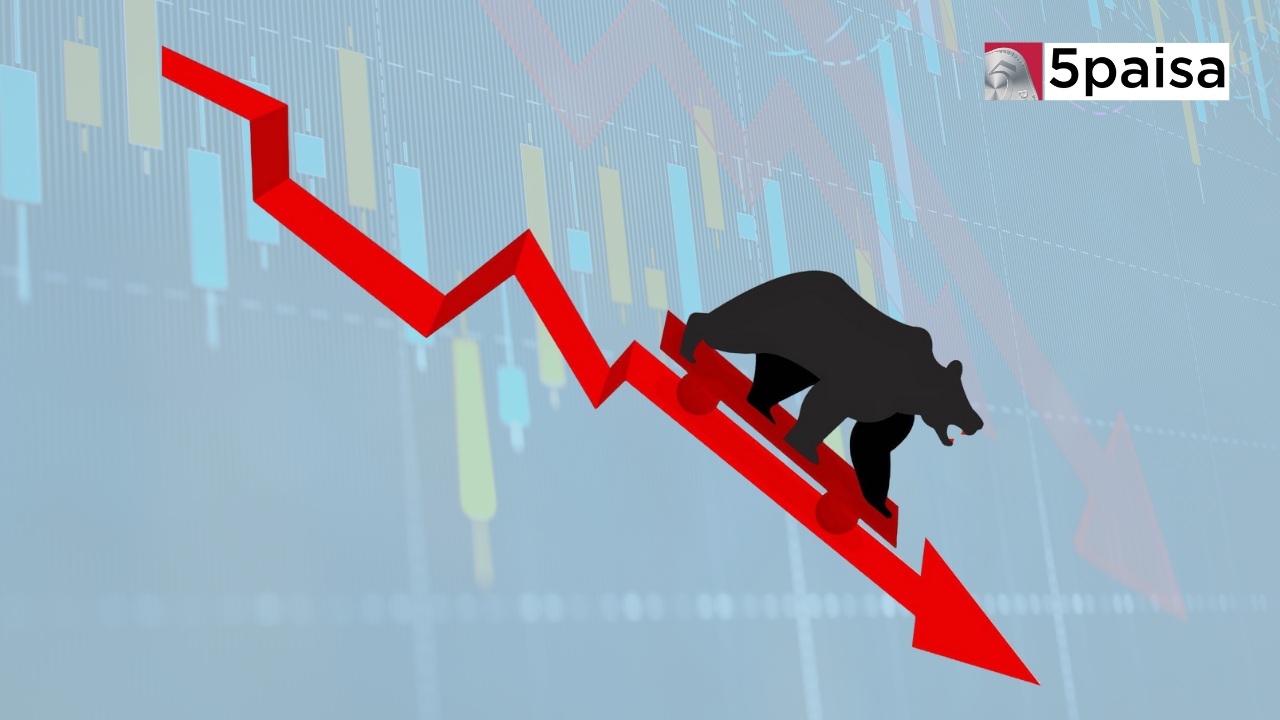TVS Motor Acquires Majority Stake in DriveX, Strengthens Pre-Owned Market
Nifty Enters Correction Zone, Sensex Drops Over 1,100 Points: What’s Next?

Last Updated: 13th November 2024 - 05:14 pm
On November 13, the NSE Nifty 50 index officially entered "correction" territory, sliding over 10% from its peak of 26,277.35 reached on September 27, 2024.
As afternoon trading progressed, the Nifty fell by 374 points, touching a low of 23,509.6—a 1.6% drop from the previous close. Meanwhile, the BSE Sensex took a hit as well, sinking more than 1,100 points to reach 77,533.3 at its lowest point of the day.
This marks the fifth consecutive day of losses for these indices, as persistent selling by foreign institutional investors (FIIs) combined with a general market unease have shaken investor confidence.
For investors, this correction reflects a growing caution. High valuations and economic uncertainties seem to have made both Nifty and Sensex stumble to their lowest points in the last five months.
Several factors fueled this latest downturn: steady outflows from foreign investors, lackluster corporate earnings, and rising inflation. Since the end of September, FIIs have reportedly pulled out about $14 billion from Indian stocks.
Earnings reports from corporations haven’t been reassuring either, with some companies posting their weakest results in over four years. On top of this, retail inflation for October hit 6.21%—a 14-month high—leaving many to think the Reserve Bank of India may not cut interest rates anytime soon.
Adding more pressure, the weekly expiration of Bank Nifty derivatives contracts encouraged traders to unwind their positions, further weighing on banking stocks.
Bank Nifty fell sharply, losing more than 1,250 points (or 2.5%), dipping below the 50,000 mark. Major banks felt the pinch: HDFC Bank share price dropped by 2.26% to ₹1,679.3, ICICI Bank slipped by 1.26% to ₹1,254.55, and SBI fell by 2.23% to ₹808.25.
Mid- and small-cap stocks were hit even harder than the larger indices, losing 2.2% and 2.5%, respectively. These broader markets had surged almost 25% year-to-date, far outpacing Nifty’s 9% gain, but are now showing signs of fatigue. Experts have long cautioned that these stocks might be overvalued, and it seems the market is finally reflecting this sentiment. The India VIX—a volatility index that reflects market uncertainty—rose over 5%, climbing above the 15-point level.
Losses were felt across nearly all sectors, with Nifty Metals taking the biggest hit, down over 2% in early trading. Leading companies like JSW Steel, Tata Steel, Coal India, and Vedanta dragged down the sector. Nifty Auto also slipped, with stocks like M&M, Maruti Suzuki, Bajaj Auto, and Hyundai Motor dropping up to 5%, putting extra pressure on the index. Pharma, Healthcare, Realty, and other sectors, including Bank, Energy, FMCG, Infra, and Metal, each saw declines around 1%.
The India VIX, often seen as a "fear gauge" for market anxiety, jumped over 4% and returned above the 15-point level, signaling a rise in market nerves.
With inflation hitting a 14-month high at 6.21%, exceeding the Reserve Bank of India’s comfort level, market sentiment remains wary. For now, it seems that concerns over rising prices, pricey stock valuations, weak Q2 results, and the ongoing sell-off by FIIs are keeping investors cautious.
- Flat ₹20 Brokerage
- Next-gen Trading
- Advance Charting
- Actionable Ideas
Trending on 5paisa
Indian Market Related Articles
Disclaimer: Investment in securities market are subject to market risks, read all the related documents carefully before investing. For detailed disclaimer please Click here.
 5paisa Research Team
5paisa Research Team




